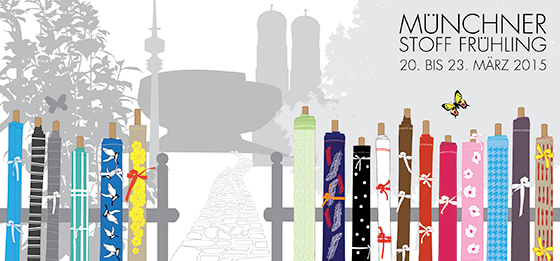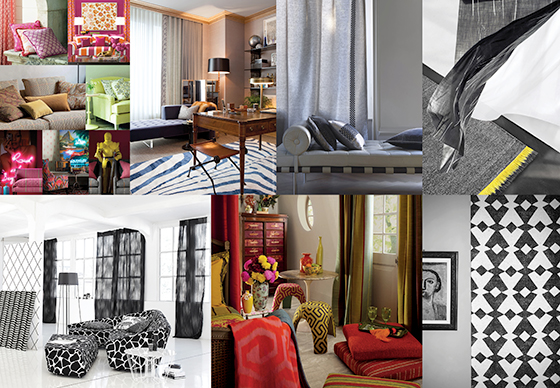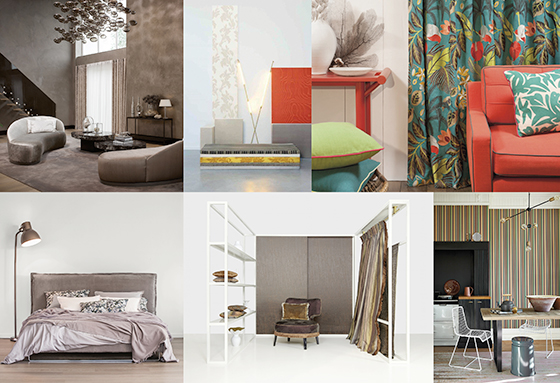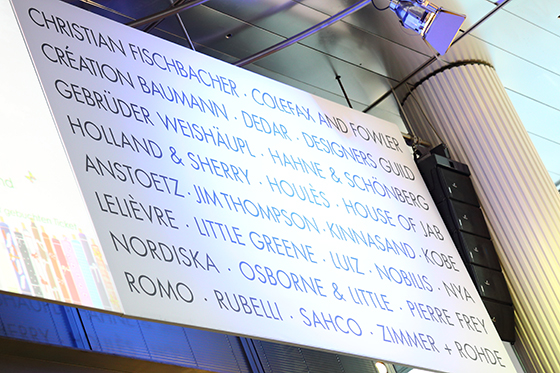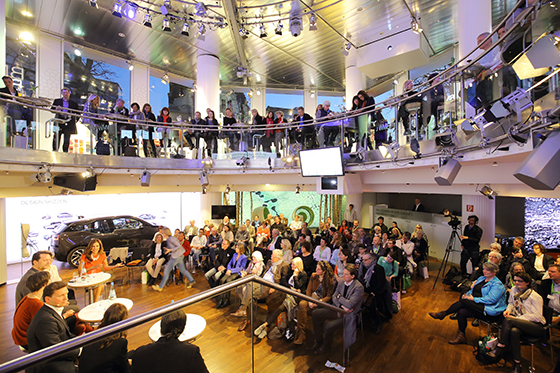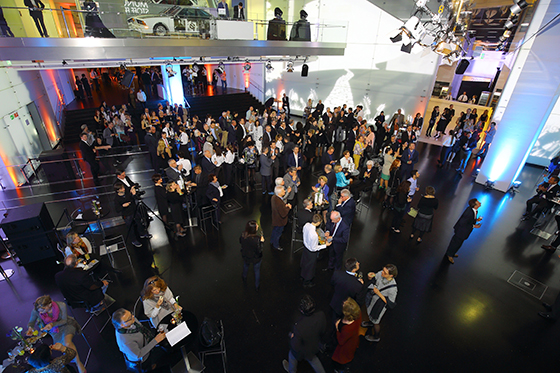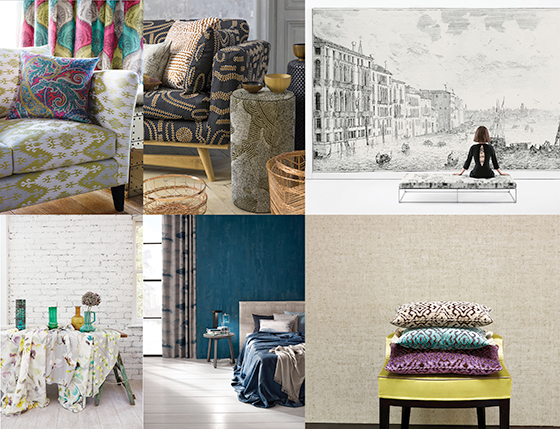Review Münchner Stoff Frühling: 20 – 23 March 2015
Scritto da Münchner Stoff Frühling
München, Germania
13.04.15
From 20 to 23 March 2015 the 18th successive Münchner Stoff Frühling took place in the Munich showrooms of the 24 participating textile brands. The 13 stations offered visitors exclusively designed interiors, brand presentations and innovations from renowned international textile companies.
This year the format of the Münchner Stoff Frühling once again met its premium pretence as a unique showroom event and observed a consistently high volume of visitors from Germany, Austria and Switzerland as well as other European countries.
The visitor assessment of this year's Münchner Stoff Frühling, based on an online survey of the registered specialist visitors after the exhibition, confirms the attractiveness of the exhibition format: 94% of the specialist visitors were satisfied with their visit to the Münchner Stoff Frühling (of which 44.2% were very satisfied). More than 60% of exhibition visitors spent two or more days in Munich and took their time visiting the showrooms in the attractive flair of the Bavarian capital.
The Münchner Stoff Frühling began its four successful exhibition days with extended opening times and various events at the showrooms of the participants on the Friday evening.
Exhibitors 2015: Christian Fischbacher | Colefax and Fowler | Création Baumann | Dedar | Designers Guild | Gebrüder Weishäupl | Hahne & Schönberg | Holland & Sherry | Houlès | House of Jab Anstoez | Jim Thompson | Kinnasand | Kobe | Lelièvre | Little Greene | Luiz | Nobilis Fontan | Nya Nordiska | Osborne&Little | Pierre Frey | Romo Group | Rubelli Group | Sahco | Zimmer+Rhode
Sponsors 2015:
Deco Home | Edward Fields | Interstil | Limited Edition | Pol International | Ruckstuhl | Tai Ping | Trevira CS | Weishäupl Möbelwerkstätten
New concept and supporting programme in the pavilion at Lenbachplatz
The focus of this year's Münchner Stoff Frühling is, aside from the main protagonists (the textiles, innovations and furniture textile trends for 2015), also on a comprehensive supporting programme and new cooperation with the related industries of floor design, fashion and mobility.
The attractive glass pavilion at Lenbachplatz formed a central location for a new, inspiring framework programme, which, on the one hand, gave visitors an opportunity to exchange ideas and, on the other, created a clear added value with inspiration and information.
For the first time, the Münchner Stoff Frühling was enhanced by a top-class carpet exhibition by renowned carpet brands such as Edward Fields, Limited Edition, Ruckstuhl and Tai Ping.
On the Friday, Dr Karl Borromäus Murr (museum director of the Staatlichen Textil- und Industriemuseums Augsburg – Augsburg Public Textile and Industry Museum – or TIM) opened the programme with his talk on "Fabric for thought – how is textile design created in fast times?" The presentation gave an informed overview of the historic meaning of textiles, their elementary meaning as well as possible future scenarios for textiles in interior design.
The subsequent podium discussion on the topic of "Modern architecture meets interior textiles" was one of the highlights of the first day of the exhibition. Moderated by Karen Webb, who intensively dealt with the subjective and the guests, the experts and talk guests Gerhard Landau (architect), Susanne Klein (interior designer), Karl Weber, (interior decorator), Sylvie Krüger (author and textile designer), Dr. Karl Borromäus Murr (museum director TIM) and Corinna Kretschmar-Joehnk (interior architect) discussed the area of conflict between modern architecture and the use of textiles. There was also a lively discussion on the topic of functionality, emotion and technology in the area of textiles.
Further central topics of the discussions included the significance of training and fostering new blood, interfaces of various players from crafts to architecture, communications and customer loyalty, the future of online trade and the continued major importance of stationary trade in the furniture sector. The unanimous consensus of the round table participants was that textiles play a central role in modern architecture – be it emotional and/or functional.
On the Sunday evening, the well-known colour expert Prof. Axel Venn gave deep insights into the effects of colours and our perception of colour concepts in his interactive talk "At home or in a hotel – the main thing is a pleasant ambiance". His many years of scientific investigations and field studies show that colours have a huge effect on well-being and the subconscious and with targeted use – including in interior design – real emotions can be evoked and conclusions can be drawn from their effects on the perception of a large population.
The entire framework programme was very well received by the trade visitors and media representatives over the course of the exhibition and stimulated active participation.
Saturday evening event
This year's Saturday evening event took place in the visionary BMW Museum. Not as a costume ball with a central theme, but as a get-together in an exclusive architectural atmosphere. Martina Starke, head of colour and material design at BMW, and Oliver Heilmer, head of interior design at BMW, gave insights into the future of car interior and illuminated the common ground between living and mobility. They showed the importance of the cross-industry use of textile materials as well as the use of colour, design and textiles in mobility and thereby illustrated the intersections in interior design. With around 700 guests, the evening event was coveted and sold out well in advance. Exhibition visitors, inviting textile editors and media representatives came for the industry get-together, cheerful exchanges and danced into the early hours.
Conclusion and prospects
The Münchner Stoff Frühling format convinces through its consistently conceptual further development. "In future, we want to further enhance the profile of the event – along with our core competence for cultivated interior textiles – and set various focal points with a modular structure. The extended supporting programme and cooperation with adjacent sectors was successful this year and was trend-setting," Manfred Schillinger. "The Münchner Stoff Frühling also has the functionality of a stable industry platform, in order to be able to foster the know-how transfer between various trades – from interior decorators, to planners, to architects – and to communicate what is special about our textile segment," says Klaus Scharf. The central target of the Münchner Stoff Frühling and the participating textile brands is to"live the culture of textile interior design, and to sustainably inspire private consumers for the distinctiveness of high-quality interior textiles outside of the exhibition with the unique Munich showroom structure," Klaus Winkler.
Contact:
Münchner Stoff Frühling e.V.
Munich
Germany
